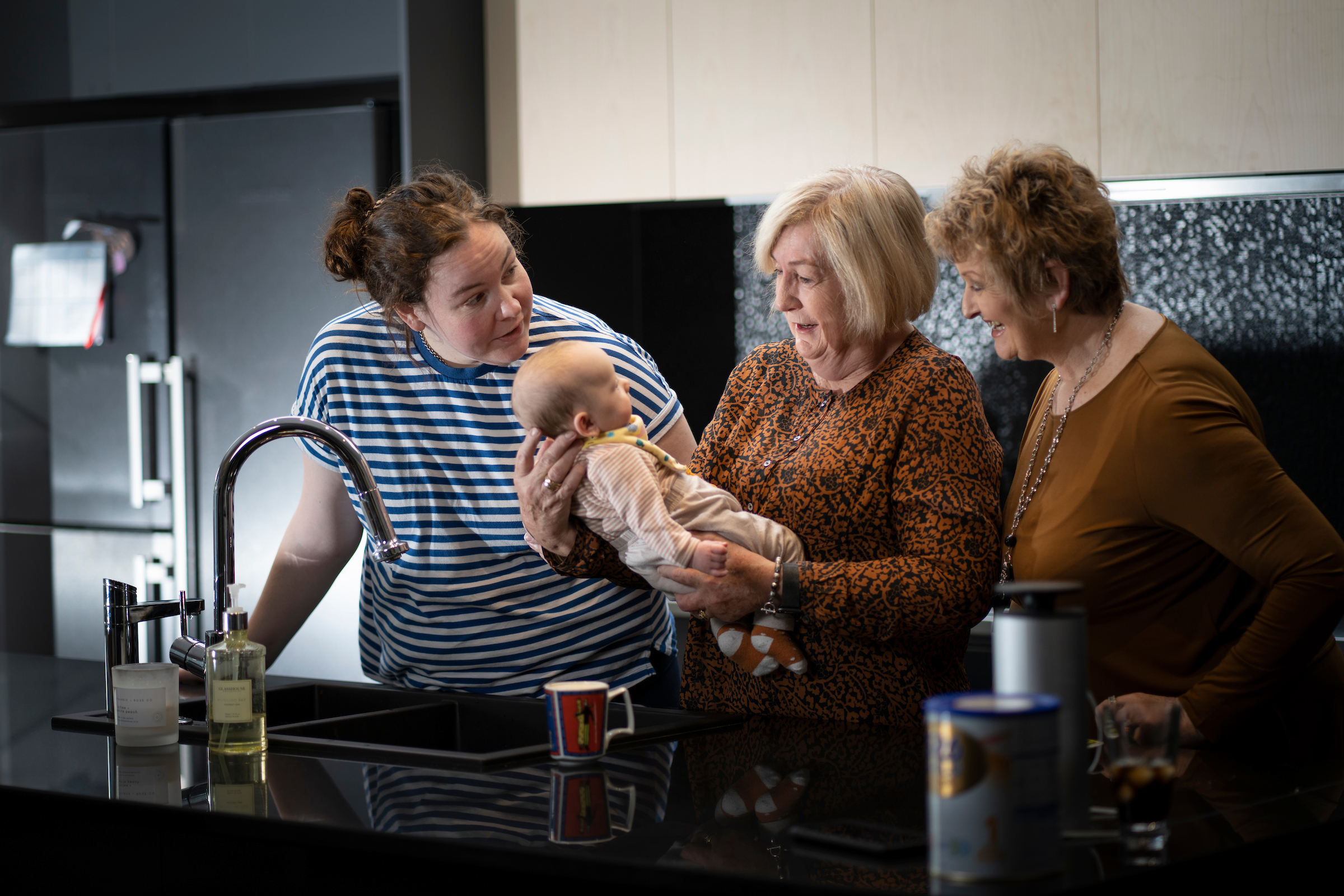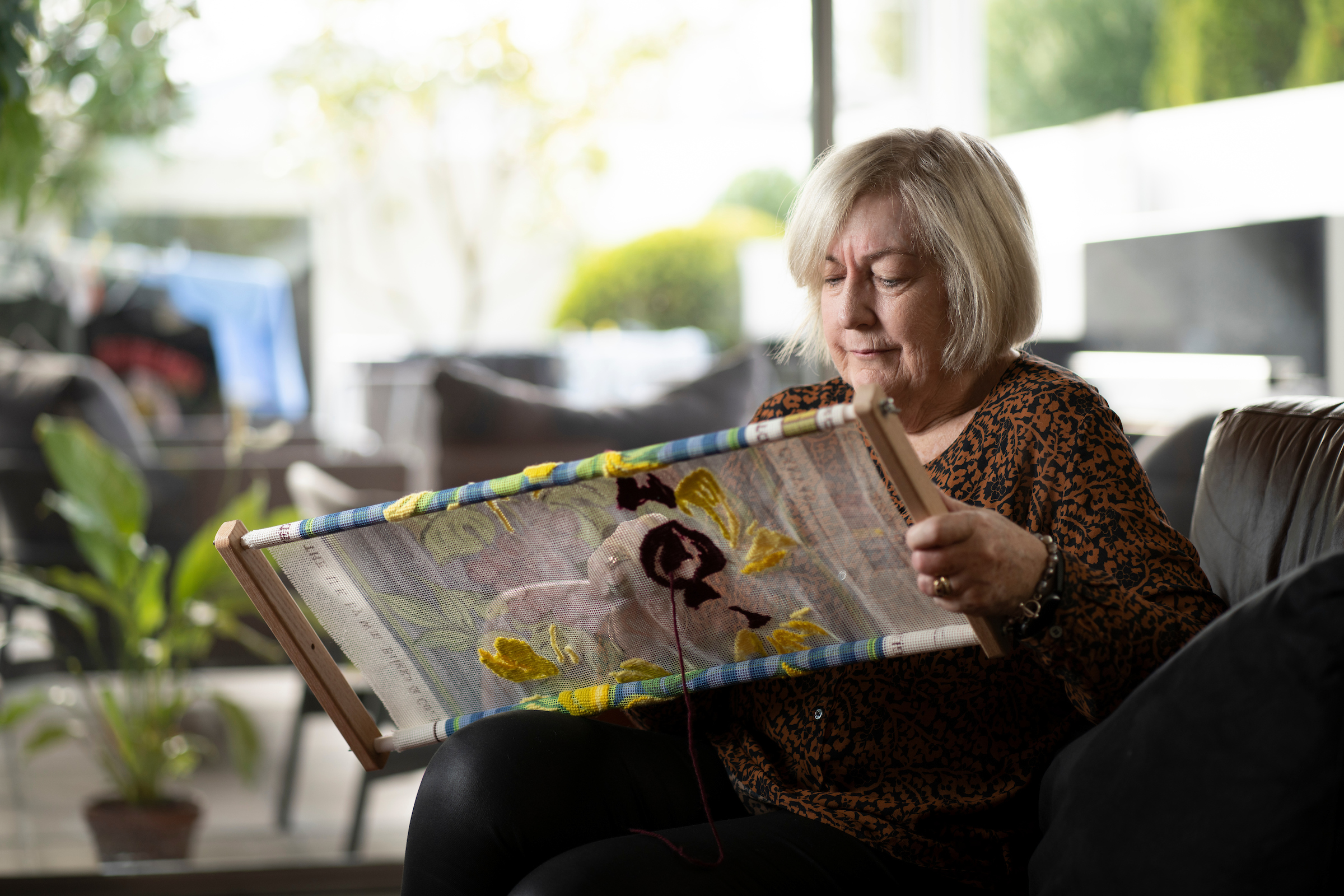When everyday activities like going to the gym became a challenge for Jenny George she knew it was time to do something about her eyesight. After a check-up with her optometrist she discovered it was cataracts. This is a relatively common issue, with cataracts affecting approximately 370,000 New Zealanders. Jenny’s situation was not so common however. Refractive cataract surgery proved to be the best solution…
For Jenny George life with failing eyesight was a struggle.
“For a couple of years I’d noticed changes. My long sight was blurred and I could tell my eyesight was going,” she says. “Friends and family were telling me I had to sort it out.”
Years ago Jenny underwent a surgical procedure on her jaw, an operation that left her with nerve damage that resulted in pain when wearing glasses.
“Taking glasses on and off constantly was very frustrating,” says Jenny. “There was both the ongoing pain and the little irritating things – like having them constantly fogging up when I was cooking for example.”
After a consultation with Dr Logan Robinson at Southern Eye Specialists, the decision was made to perform refractive cataract surgery.
Refractive cataract surgery moves beyond simply removing the cataract that is blurring vision. Instead the process actually enhances vision and reduces or eliminates the need to wear glasses.
This is achieved by minimizing focus errors (e.g. short-sightedness (myopia), long-sightedness (hyperopia) and astigmatism) in the eye during surgery. These focus errors can be corrected by surgical techniques and choosing the most appropriate intraocular lens (IOL) for each patient.
Refractive surgery also provides enhanced vision across different distances.
“Standard cataract surgery can often achieve either clear vision in the distance or up close – but not both,” says Dr Robinson. “Using premium IOLs, or different power IOLs in each eye, we can help patients achieve better vision at all distances, and all without the need for glasses.”
“In Jenny’s case I recommended a premium IOL technology, called Extended Depth of Field (EDOF). This was most likely to give her the greatest independence from glasses after surgery,” he says.
Refractive cataract surgery moves beyond simply removing the cataract that is blurring vision. Instead the process actually enhances vision and reduces or eliminates the need to wear glasses.

Family time offers a chance for new perspectives.
“The minute I arrived I was kept informed – so I knew what to expect pre-surgery and post-surgery.”
Leading up to the big day Jenny was feeling confident about her decision to undergo the surgery. While she expected a few nerves she wasn’t prepared for how easy and clear the entire process was.
“The whole team was incredibly professional,” says Jenny. “Right from the minute you arrive you knew what was going to happen and why it was happening. The entire staff give you confidence.”
“The minute I arrived I was kept informed. So I knew what to expect pre-surgery and post-surgery. I also knew what to expect in the theatre and how each part of the process would go. It was a smooth running machine.”
Dr Robinson used the Symfony IOL and, as he explains, the approach exceeded expectations for this particular case.
“Jenny was able to stop wearing glasses two days after surgery – and she hasn’t worn them since,” he says. “From a technical perspective, Jenny has better than 20/20 vision in both eyes in the distance. She can read newspaper print without glasses. It doesn’t get much better than that as far as a post-cataract surgery outcome.”
For Jenny there are many improvements to life like reading the small print and being able to enjoy watching sport. Recently she stayed up late with her iPad to watch New Zealand succeed in the cricket World Test Championship.
“It would have been a real challenge in the past,” she says. “But things like that are simply not a problem now. It’s really been a life-changing experience.”
Jenny continues to go from strength to strength post-surgery, making the most of her improved vision. Social activities are no longer stressful and, after beginning to feel like she was becoming a safety hazard prior to surgery, she is grateful to be back at the gym,
“You can’t be 100% sure you’re doing a specific exercise correctly when you can’t see properly,” she says. “It (the surgery) has made it a lot easier to focus on the important things.”
She has also noticed the change when hitting the slopes.
“I no longer have to wear glasses under my goggles when I’m skiing. And I don’t feel worried about depth perception when I’m out on the snow. The difference is just incredible.”

The finer details are now in focus.
…the only thing she would choose to do differently would be to get the surgery done sooner.
For Dr Robinson refractive cataract surgery and premium EDOF IOLs aren’t necessarily the first choice for all cataract patients and he stresses the need for an expert evaluation for anyone considering the procedure.
“The key is to match the available surgical techniques and IOL technologies with the patient’s requirements,” says Dr Robinson. “Jenny’s desire to reduce the need for glasses and continue enjoying her active and social way of life was a compelling reason to go for this option.”
For the star patient, the only thing she would choose to do differently would be to get the surgery done sooner.
“I’m in my late 60s and I’ve adapted well and it wasn’t a hassle at all. I’d say to those considering their vision problems to do something about it sooner rather than later.”